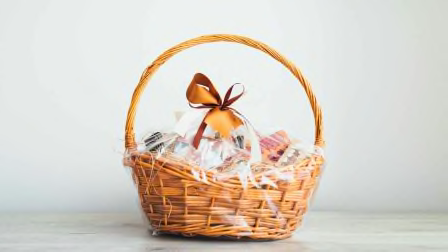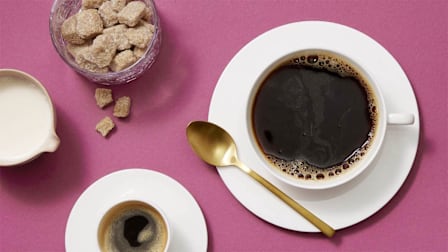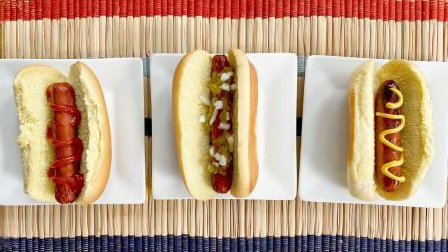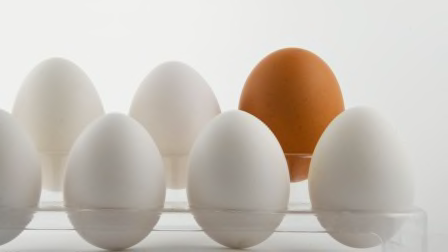How to Make the Perfect Cup or Pot of Tea
Tea leaves, water, and a few guidelines are all you need
When you shop through retailer links on our site, we may earn affiliate commissions. 100% of the fees we collect are used to support our nonprofit mission. Learn more.
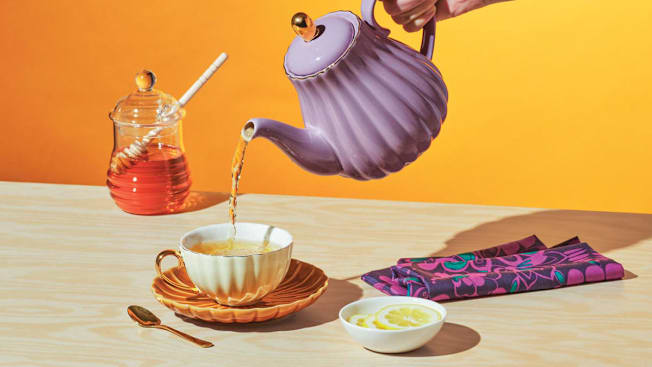
I never realized it as a kid, but drinking tea was a ritual in my family. We drank a variety of teas, each made in its own precise way. Every tea has an optimal steep time and ideal water temperature, and making sense of it all can be dizzying.
My maternal grandmother used her own basic method when my sisters and I visited in Vancouver. She placed a few black tea bags in a porcelain pot, poured just-boiled water over them, then added milk until it looked just the right color tan, and more sugar mixed in than I would put in my own tea now. It was a pretty average black tea preparation method.
Before You Pour
After water, tea is the most widely consumed beverage in the world, according to the Tea Association of the U.S.A., and it can be found in almost 80 percent of all U.S. households. So whether you’re a lifelong tea drinker or just getting started, here are a few fun facts. (Or jump straight to our tips on how to make tea.)
The Actual Definition of Tea
Tea industry experts and purists tend to say that the true definition of tea is what’s brewed using the plant Camellia sinensis. Herbal “teas” made without that plant—for instance, chamomile, chrysanthemum, mint, and the bagged Tazo Wild Sweet Orange (Amazon, Target) in my pantry right now—don’t fit this definition of tea, but for this article, we’ll go over those, too.
Loose Tea vs. Tea Bags
Tea bags can make tea preparation easier. A few of the teas I drink at home are bagged, such as Tower of London tea from Harney & Sons (Amazon) and Emperor’s 100% White Tea from Republic of Tea (Amazon). But there are a few things to be aware of before you choose bags over loose leaves.
For a great brew, tea leaves need room to expand, and packaged tea bags, sachets, and pyramids tend to restrict leaves, says Quentin Vennie, co-founder and CEO of the Equitea Co., based in Baltimore. When tea comes in a bag, it can be difficult to judge its quality, and if all you’re getting is tea dust and broken leaves, that “leads to a very bitter and astringent tea liquor,” Vennie says. Spooning loose tea right into a pot or cup will give your leaves the maximum amount of room so they develop their full flavor. But you may then need a strainer. Consider using an infuser, which is more convenient; opt for a larger one to allow hot water to surround the leaves. Some infusers are made for use in pots and others for single cups.
Loose tea leaves are compostable. Bagged teas may be as well, but some bags are less harmful to the environment than others. Some are made with biodegradable paper and others are made with potentially chemical-laden plastic, which can pile up in landfills and even release microplastics into your brewed tea, according to a study in the journal Environmental Science and Technology in 2019. And it may not seem like a big deal, but bags closed with staples can mean that small bits of aluminum can accumulate in landfills over time. According to the Republic of Tea, which makes tea bags without staples, for every million cups of its tea consumed, 60 pounds of staples are kept out of landfills. (See this article for more on the differences between loose and bagged tea.)
How to Make Your Tea
Start by using filtered water if you can. Even good-tasting tap water contains chemicals such as chlorine or minerals that can affect your tea’s flavor. Using a water filter pitcher can ensure that you always have filtered water on hand when you want to brew a cup or pot of tea.
Heat the water to the right temperature for the type of tea you’re making. Water that’s too hot can “burn” the tea leaves and change the flavor of the brew. Too cold, and you won’t extract maximum flavor from the leaves. (Use the recommendations for each type in the sections below.) An electric kettle with a temperature setting makes this easy, but you can also follow some general guidelines. Boiling water is ideal for black, pu erh, and herbal teas. Water that’s steaming—but not boiling—is considered best for oolong, green, and white teas.
Measure your tea. This isn’t really an issue when you’re making a single cup; use one tea bag or 1 teaspoon of loose tea. Two bags should do for a typical-sized teapot. When it comes to loose teas, a general rule is 1 teaspoon for each cup of water in the pot. Some tea types may be best with more or less, however, so you’ll want to follow any directions on your tea’s box or tin.
Steep time is important, too. Check the directions on tea packages or use the times in the sections below as a guideline. If you don’t let the leaves sit in the water long enough, you’ll get a weak tea; if you steep leaves for too long, the results can be even more unfortunate. “Oversteeping results in a very strong, bitter-tasting cup of tea,” says Shabnam Weber, a tea sommelier and president of the Tea & Herbal Association of Canada. “Green teas will steep the fastest and become bitter, followed by black and oolong. If you prefer a stronger tea, use more leaves instead of letting your brew steep longer.” White teas don’t get bitter, Weber says, and herbal teas just get stronger if you steep them for a longer time.
Black or Dark Tea
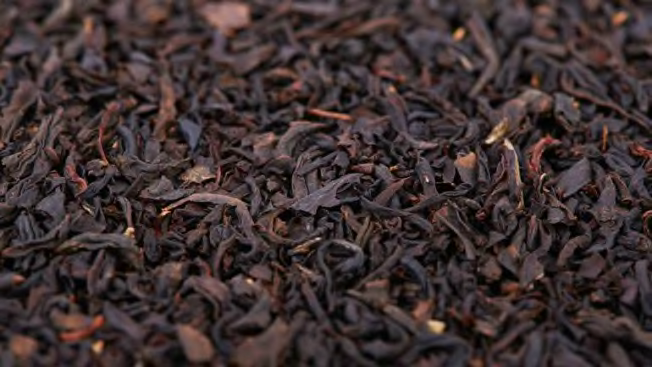
Photo: Yevgen Romanenko/Getty Images Photo: Yevgen Romanenko/Getty Images
According to the Tea Association of the U.S.A., about 84 percent of all tea consumed is black tea, including Lipton tea bags, Arizona Iced Tea, the English staple PG Tips (Amazon), Earl Grey, and maybe even pricier black tea grown on volcanic ash in Hawaii.
Common Black Tea
Best water temperature: 205° F to 212° F
Optimal steep time: 3 to 5 minutes
What to add: Cow’s milk (I froth mine), plant-based milk, sugar, or honey
Tea experts like Quentin Vennie, who outlined many of the suggested water temperatures and steep times here, agree that just-boiled water is suitable for pouring over black tea. But there are exceptions.
Masala Chai
Best water temperature: Add directly to a pot of boiling water (212° F)
Optimal steep time: Boil for 2 to 7 minutes
What to add: Cow’s milk or plant-based milk, sugar, or honey
Masala chai is common in Indian households and is often made by boiling black tea leaves or bags in water and adding cardamom, cinnamon, cloves, ginger, nutmeg, star anise, and black pepper. You may find shortcuts in my pantry like tea bags, powders like the Blue Lotus Chai Traditional Masala Chai (Amazon), and concentrated syrups like the Tazo Chai Concentrate (Amazon) I used as a barista in college.
Syrups like those are standardized, and they save you the trouble of worrying about time and temperature, says Saurabh Kajaria, co-founder of Trishnna Tea in Houston. But shortcuts aren’t always ideal. The commercial concentrates are full of sugar and preservatives, and if you take a look at a nutrition label on one of these packages, you might decide to put it back on the shelf.
Pu Erh Tea
Best water temperature: 180° F to 195° F
Optimal steep time: 1 to 3 minutes
What to add: Nothing
Pu erh is a different type of dark tea. It’s made from Camellia sinensis leaves, but unlike common black tea, which is made when the leaves are oxidized, meaning exposed to air to dry, pu erh tea is fermented by letting the leaves sit in piles and slightly decompose before drying, giving it a distinctly different, I’d say woodsy, flavor. You can use pu erh tea leaves for up to five infusions, meaning you can steep the same leaves five times, and when you have a great tea, it will get better each time you steep it, Vennie says. You’ll see in many Chinese restaurants that pu erh leaves are steeped several times throughout a meal.
Green Tea
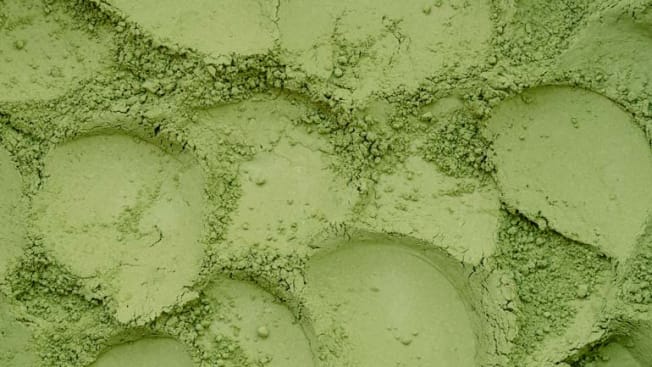
Photo: Alina Nechaeva/Getty Images Photo: Alina Nechaeva/Getty Images
Best water temperature: 175° F to 180° F
Optimal steep time: 2 to 3 minutes
What to add: Nothing; serve straight up
Green tea makes up just about 15 percent of all the tea imported into the U.S. Like black tea, it’s made by exposing it to air to wilt it, then drying it, but it goes from being picked to being dried more quickly. It’s commonly steeped alone, but there are green teas available with a variety of natural flavors added as well.
Scented Green Teas
You may increasingly find green tea blended with other natural flavors. Among the green teas in my kitchen cupboard, for example, is green jasmine tea, which has a distinctly green tea taste and a hint of jasmine flowers or jasmine oil. Genmaicha is another green tea; it contains toasted rice. It may be an acquired taste if you’re used to more basic green teas. You can cook with it, too.
Matcha
Best water temperature: 175° F to 180° F
Optimal steep time: None; drink after whisking in hot water
What to add: Nothing; best served straight up
I see matcha (shown above) as the soft shell crab of green teas: You consume the whole leaf. It’s dried and ground into a powder. Then you whisk it in hot water. Matcha can be found blended with milk in an iced latte from Dunkin’ or Starbucks, or in the form of ice cream. But to truly appreciate the flavor and the caffeine content that’s nearly double that of regular brewed tea, I think it’s best to drink it with nothing added. Maeda-en Ceremonial Matcha (Amazon) is currently in my pantry to satisfy a matcha craving.
Oolong Tea
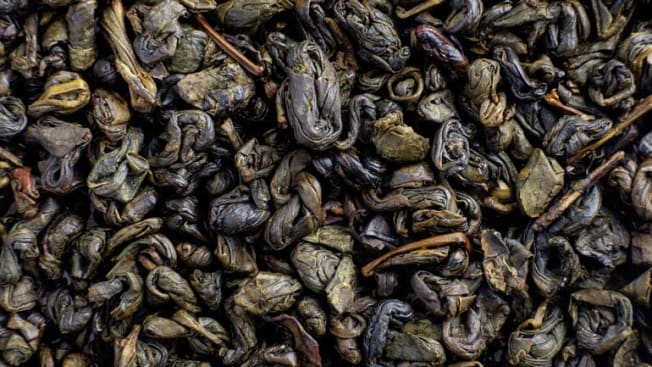
Photo: Adobe Stock Photo: Adobe Stock
Best water temperature: 185° F to 205° F
Optimal steep time: 3 minutes
What to add: Nothing; best served straight up
Oolong teas sit between black and green, depending on how the leaves are processed. Darker oolongs are processed more like black tea, and lighter oolongs are processed more like green tea. Tieguanyin is a type of oolong that I first learned about under the name Kuan Yin, or the Iron Goddess of Mercy. In addition to being prepared using these typical guidelines, oolong is used for gong fu cha, said Shunan Teng, the founder of Tea Drunk. Oolongs tend to be smooth, and some are described as tasting milky on their own.
White Tea
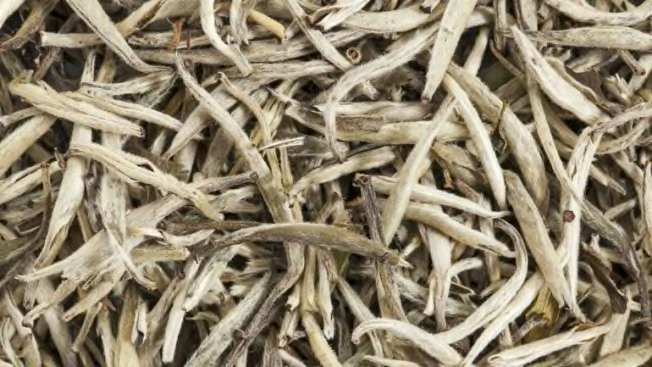
Photo: Marek Uliasz/Getty Images Photo: Marek Uliasz/Getty Images
Best water temperature: 165° F to 170° F
Optimal steep time: 2 to 3 minutes
What to add: Nothing
White tea is delicate, so it’s best to treat it delicately. That means using water that’s not too hot and not steeping it for too long. While some tea experts and companies suggest steeping for just a couple of minutes, the directions on the tin of white tea I own say to steep for just 1 minute.
Once upon a time, I was gifted a pricey tin of Rishi Silver Needle White Tea, and I never would have guessed what the rare, fuzzy little hand-picked buds harvested early in the spring would taste like. Mild, but with a complex combination: a little grassy, slightly fruity, and slightly floral.
Herbal Tea
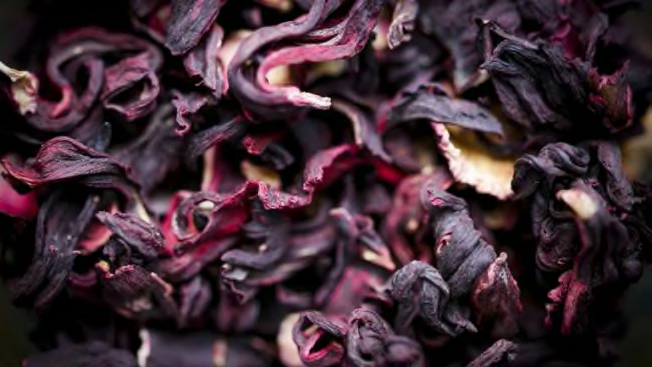
Photo: Emma Farrer/Getty Images Photo: Emma Farrer/Getty Images
Best water temperature: 175° F to 212° F
Optimal steep time: 2 to 7 minutes
What to add: Nothing, or add honey or lemon to taste
Herbal tinctures like mint, chamomile, rooibos, and hibiscus are popular, but there’s a wide variety of herbal blends to choose from, too, and the optimal steep time can vary, so check the package directions.
“The specific steeping time recommended on the packaging is important for ingredients to be allowed the optimal time to develop their flavor and mouthfeel,” says Heather Black, a spokesperson for Clipper Tea, a top brand in England. Black says that generally if you’re looking for a lighter or more delicate taste, 8 ounces of boiling water (212° F) for 3 to 4 minutes is the way to go, and if you want a stronger and fuller mouthfeel, you can steep longer, from 5 to 7 minutes.
Saurabh Kajaria, a co-founder of Trishnna Tea, recommends brewing the company’s loose-leaf herbal teas at 175° F for 2 to 3 minutes.
Iced Tea
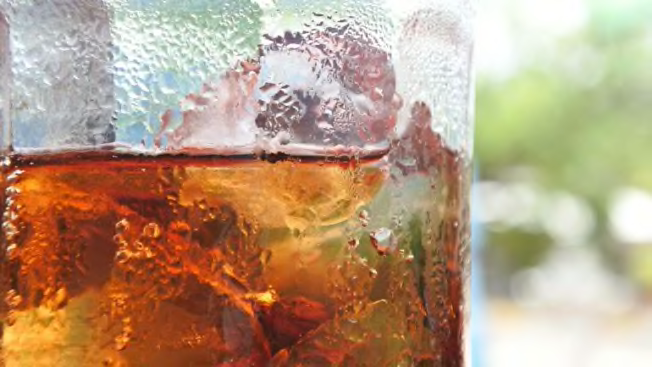
Photo: Sarawut Srisomchai/Getty Images Photo: Sarawut Srisomchai/Getty Images
About 75 to 80 percent of the tea consumed in the U.S. is iced, according to the Tea Association of the U.S.A., including Snapple Peach Iced Tea, a favorite in my household, common iced tea made at home, and fancier bottled brands.
Unless you choose unsweetened varieties, bottled iced tea can be high in sugar. You can use any of the teas above and follow the package instructions to make your own or follow our guidelines and pour the hot tea over ice.
If you want to make a big batch, make a concentrate by adding eight to 10 tea bags to a quart of hot water and steeping it for 3 to 5 minutes. Then simply pour the tea over ice. You can sweeten to taste, which can be a trial-and-error process, so start small and add your sweetener little by little until you reach the sweetness you want. Then remember or write down what “to taste” means to you.
Gear to Make the Perfect Cup of Tea
In addition to brewing methods, the perfect cup of tea also depends on what you use to make it.
What to Drink Your Tea From
If you’re considering clayware tea pots or cups for your tea, make sure they’re glazed, otherwise they may not be food-safe, Teng said. Some of it can contain lead and other heavy metals. But porcelain can be used glazed or unglazed, and glassware will also work. But she doesn’t recommend using metal teaware.
“While we can use metal kettles to boil water, the risk of tea having a chemical reaction with metal teaware is very high,” and it could have an impact on the tea’s flavor, Teng said.
Electric Kettles With Special Features
Getting your water up to the right temperature is essential to preparing the perfect cup of tea. Some electric kettles have buttons for different temperatures, making it easier to know when the water is just right.
Gear for Cold-Brew Tea
Cold brewing is another method for making cold or iced tea, and there are many cold-brew coffee makers. Here are some top-rated ones in CR’s tests.
Editor’s Note: A version of this article also appeared in the November/December 2024 issue of Consumer Reports magazine.

















